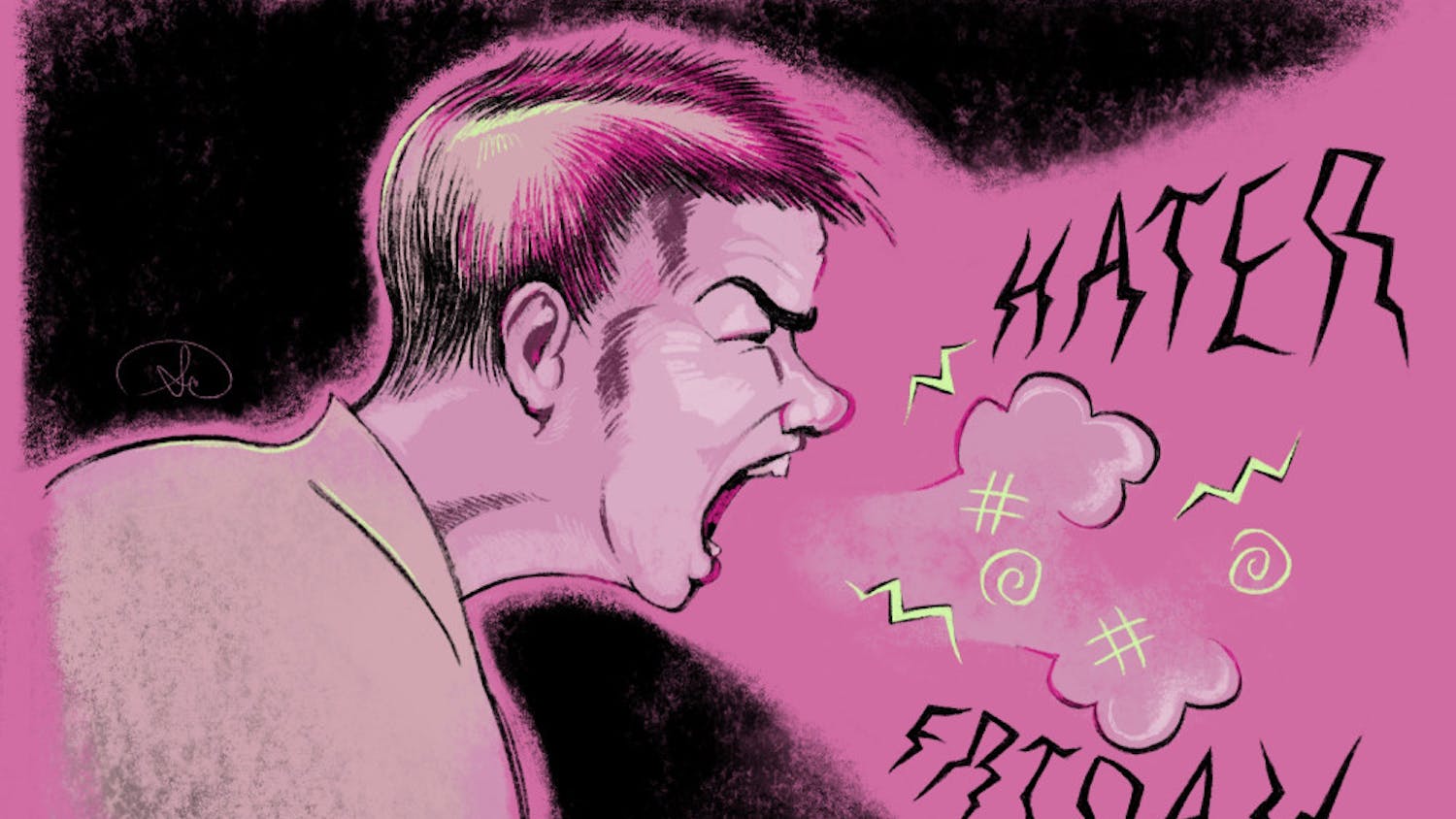According to my friends, my visual studies class is infiltrating my life a little too much. “All seeing is seeing as,” my professor says, which I repeat too often. Still, I think the connecting thread of the recent media I have watched is just that: how my gaze works as a framing device to link these works together in their common thread of exploring the role of the viewer, at least in some way.
Really, I just like writing about the media I enjoy. That being said, all these pieces frame the viewer’s gaze as a point of confinement or contention. So perhaps this assortment of media can be a musing on what it means to be a viewer and watch something, specifically on seeing as an active action and how my own seeing as shapes my interactions with them.
Spoiler warning for I Saw the TV Glow.
Suzi Ferrer: Portrait in Six Dimensions
Portrait in Six Dimensions is a piece in the Johnson Museum that I cannot stop thinking about and revisiting when I have the time. In a small room, six glass figures hang from the ceiling with nooses around their necks. Everything has this dim, sickly yellow lighting over soft faux-grass and quiet audio. The figures just barely rotate at times from the suspension.
The piece reads almost like the remnants of a public hanging: six bodies, swinging. But all the ropes are different. The girl with gemstones around her breasts and crotch and an open mouth for a head has a knotted cloth as her noose, evoking a home-grown, domestic death. A figure in the back, one that you really have to go into the room and past the first two rows of bodies to see, is wrapped entirely in pink yarn with little pink yarn pigtails and a pink yarn noose to match. The figure labeled “Superstar” has coiffed blonde hair and a dismembered baby doll in a plastic bag tied to her crotch. She also has no eyes — just lips.
I don’t think any of the plexiglass women have eyes. None of them seem to be rendered as alive, but they are further denied of any way of seeing. Ferrer’s artist statement says: “‘Portrait’ is a specific statement about female stereotypes and role-playing, or perhaps, what this society expects of women, and how they are viewed in it.”
Is it this viewing — our viewing, perhaps — that reduces women to a near 2D sheet of glass in a process that is death? Is the viewer the killer? If the noose is linked to the flattening of the body and the human experience into this sheet of glass, into six parts that are not nearly enough to stand in for a whole, then have we fashioned it with our gaze? Is interpreting the stereotype, even if to see past it, still killing in a way?
Taemin: “Guilty” (Music Video)
Taemin’s “Guilty” music video is an exploration of eroticism and transgression. In color palettes of cold blue and warm orange, the visuals depict a tension between repression and sexual liberation, a conflation of pain and sexualization, a lyrical theme of the “guilty” inflictor thrilling in causing pain, and the blurring of “good” and “bad.”
It’s hard for me not to associate this album with its rollout — the teaser photos forcing the viewer to consider their literal consumption of the idol and person Taemin through voyeuristic framing. On that same note, I am particularly fascinated by how the viewer interacts with the music video. Some of the shots are framed so intimately or painfully I cannot help but feel as if I am intruding, while other angles, such as from through a keyhole, visually force you to look through, to peep.
Jane Schoenbrun: I Saw the TV Glow
This film will not leave my head. I Saw the TV Glow is a horror film centering the transgender experience through the main character Owen, his best friend Maddy and the TV show The Pink Opaque. I’ve written about this film before — specifically about how apt the metaphor of being buried alive is for the repression that comes with being closeted and gender dysphoria (or as I think of it: when the way you are embodied physically in this world is wrong).
There are so many things I love about this film (although it makes me viscerally sick at times), from the constant feeling I have in my stomach that something is very, very wrong to the queer experiences depicted that make a part of my existence feel more tangible (Maddy’s declaration that she’ll die if she stays in the town, Owen’s wish that Maddy would come back and force him to be buried alive — that is, transition), to the pink doodles that get bleaker tonally as the film progresses. I love the sickly visuals of the world of The Pink Opaque and the progressive increasing unsettling feeling. And I don’t quite know how to describe my relationship with the feeling that I too am buried underground somewhere, some better part of me that could be alive that I have to violently free, but watching the film makes me feel it so viscerally.
Maybe one of the most haunting moments for me during my rewatch is when Owen turns directly to us to reassure us that he is fine. The fourth wall break makes us, as the audience, the ones forcing this torment and repression upon him. I sit facing my laptop screen, the way Owen sits in front of his TV, and we both see someone there who is too much like us, who we cannot free. What is this version of viewing — consuming, witnessing, condemning?
Pen Fang is a freshman in the College of Arts & Sciences. They can be reached at pfang@cornellsun.com.











